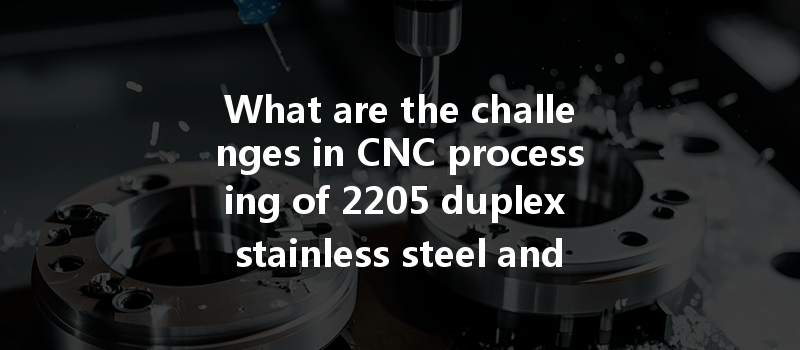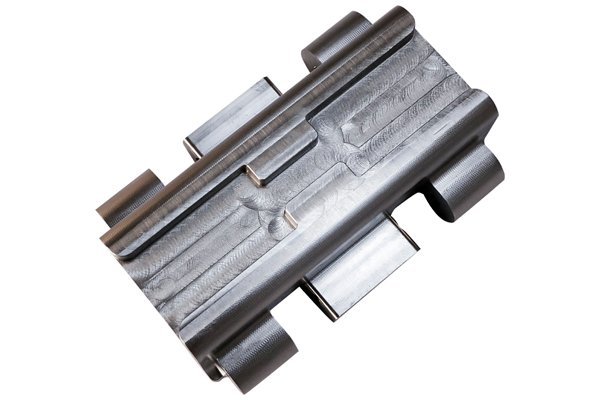Have you ever wondered what it takes to machine materials that are both tough and resilient? In the world of manufacturing, 2205 duplex stainless steel stands out as a prime example of such a material. With its unique microstructure and exceptional properties, this alloy offers an impressive combination of strength, corrosion resistance, and weldability, making it a popular choice in sectors like oil and gas, marine applications, and construction. However, despite its advantages, CNC processing of 2205 duplex stainless steel is fraught with challenges. In this comprehensive guide, we will explore these issues in detail, along with effective solutions to maximize efficiency and quality.
Understanding 2205 Duplex Stainless Steel
Before delving into the specifics of CNC processing, it’s crucial to grasp the fundamental properties of 2205 duplex stainless steel. This alloy is primarily composed of approximately 22% chromium, 5% nickel, and 3% molybdenum, enhancing its mechanical properties and corrosion resistance significantly compared to standard austenitic stainless steels. Its dual-phase structure, comprising both austenite and ferrite, provides excellent strength and toughness, making it desirable for various industrial applications.
However, it’s essential to recognize that these benefits come with particular challenges during machining.
Main Challenges in CNC Processing of 2205 Duplex Stainless Steel
One of the most significant challenges in machining 2205 duplex stainless steel is work hardening. The material tends to harden quickly under stress, which can lead to increased tool wear and diminished machining efficiency.
Solution: Utilize cutting tools made from high-performance materials, such as carbide or ceramic, designed to withstand higher temperatures and stresses. Additionally, implementing optimal cutting parameters—such as lower cutting speeds and higher feed rates—can significantly reduce work hardening effects.
Due to its toughness and hardness, 2205 duplex stainless steel can lead to excessive tool wear. This not only impacts production costs but also affects the precision of the parts being machined.
Solution: Employ coatings like TiAlN (Titanium Aluminum Nitride) on cutting tools, which improve wear resistance and extend tool life. Regular monitoring of tool conditions and replacing worn-out tools promptly will ensure consistent quality and reduce downtime.
CNC machining of 2205 can lead to longer, stringy chips that interfere with the machining process and can cause tool damage or part defects.
Solution: Optimize the cutting parameters to facilitate effective chip removal. Operators can also adopt techniques such as using chip breakers on the cutting tool, which can help improve chip control and enhance machining efficiency.
Cutting stainless steel generates significant heat, which can affect the properties of the material and lead to thermal distortion of the workpiece.
Solution: Incorporate adequate cooling strategies, such as flood cooling or high-pressure coolant systems, to maintain a stable temperature during the machining process. This will help preserve the mechanical properties of the material and ensure precision.
Achieving a high-quality surface finish is critical for components made from 2205 duplex stainless steel, especially in industries requiring stringent specifications.
Solution: After roughing operations, use finishing tools and optimized parameters to achieve the desired surface finishing quality. Techniques such as honing or grinding may also be employed post-CNC machining to enhance the surface finish further.
In some cases, components manufactured via CNC machining may require welding later on. The presence of ferrite in duplex stainless steels can pose challenges during welding, leading to susceptibility to cracking.
Solution: Ensure pre

Best Practices for CNC Processing of 2205 Duplex Stainless Steel
To optimize CNC processing of 2205 duplex stainless steel, several best practices can be employed:
Prior to commencing machining, thorough planning and simulation using CAD/CAM software can help pinpoint potential issues. This allows for adjustments in cutting parameters before physical machining begins.
Frequent inspections and maintenance of machining tools can help detect wear early on, enabling timely replacements that ensure consistent production quality.
Investing in training for CNC operators is key. Well-trained personnel can identify problems early on and know how to adjust processes effectively to mitigate challenges.
Implementing stringent quality assurance checks throughout the machining process helps to catch potential defects or deviations, ensuring that all parts meet required standards.
Emerging Technologies to Enhance CNC Machining of Duplex Stainless Steel
As technology continues to evolve, new innovations help tackle machining challenges more efficiently. Among these emerging technologies:
Cutting tools with enhanced materials and coatings provide improved heat and wear resistance and can significantly reduce the challenges faced in machining duplex stainless steel.
Integrating Internet of Things (IoT) devices and Artificial Intelligence (AI) into CNC machines can lead to real-time monitoring and optimization of machining processes, ultimately enhancing productivity and quality.
Utilizing additive manufacturing techniques in conjunction with CNC machining allows for complex geometries and can aid in addressing machining challenges by fabricating components with greater precision.
Successfully navigating the challenges of CNC processing of 2205 duplex stainless steel requires strategic approaches to work hardening, tool wear, chip formation, thermal stability, surface finish quality, and weldability. By employing advanced techniques, optimized tools, and rigorous quality assurance processes, manufacturers can overcome these obstacles.
As industries increasingly turn to 2205 duplex stainless steel for its robust properties, understanding and employing effective machining strategies will become indispensable. The knowledge shared in this blog serves not just as advice but as a guide to unlocking the full potential of this remarkable material. Staying adept in these techniques is vital for any manufacturing unit looking to thrive in a highly competitive marketplace. Remember, investing effort in understanding the complexities of CNC processing will ultimately lead to improved product quality and efficiency.
Let’s empower our production capabilities—one precise cut at a time!






